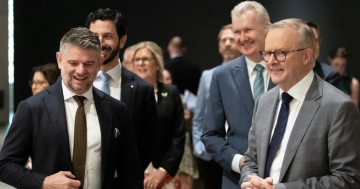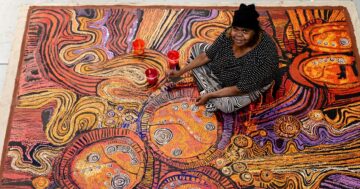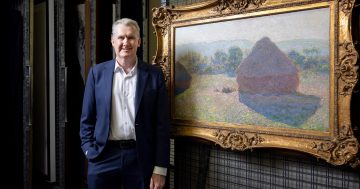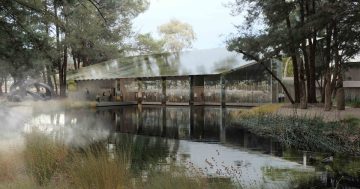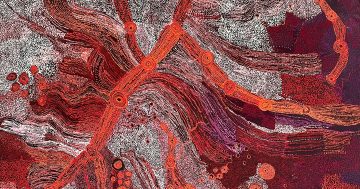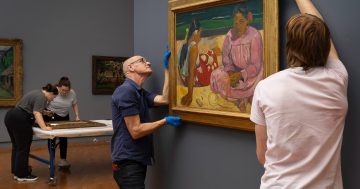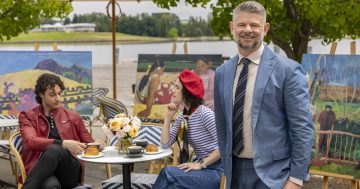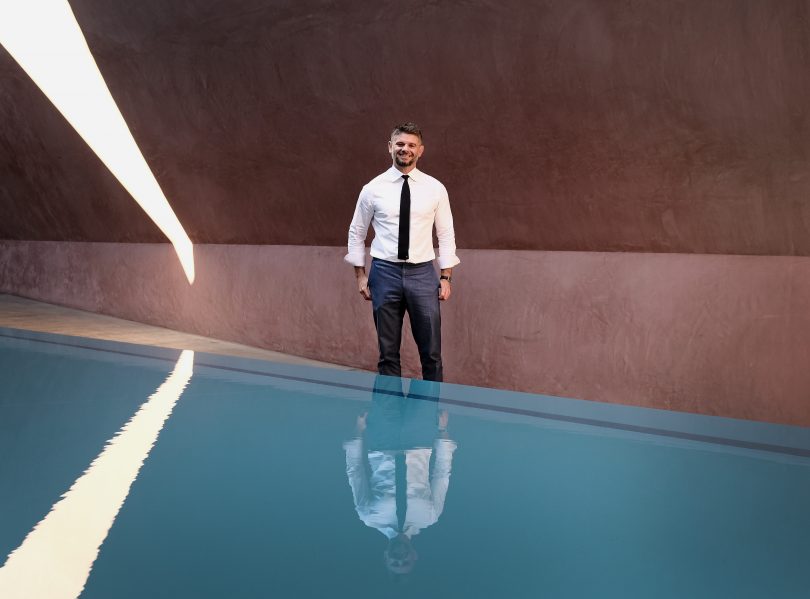
NGA director Nick Mitzevich in the Galery’s James Turrell skyspace. Photos: Supplied.
If you were looking for a sign that cultural change is afoot at the National Gallery of Australia, it’s hanging just behind the door in the new director’s office. The paint-spattered Blue Poles onesie was commissioned for new director Nick Mitzevich to wear at his first staff Christmas party and he gleefully shows me just how effectively it blended into the Jackson Pollock masterpiece.
After some difficult periods for the Gallery in recent years, 47-year-old Mitzevich says he is here to stay. He’s battling Canberra hayfever which has kept him sneezing for months but is bursting with enthusiasm about the established native garden surrounding the house he’s bought, and the challenges it presents.
His previous, beloved garden in the Adelaide Hills surrounded a mid-century modernist stone house, and among the lessons he learned there was the value of watching the seasons pass, observing what needs nurturing and making sure the soil is fertile. That also makes gardening a nice metaphor for what he’s attempting to do with the Gallery.
There are a couple of straightforward aims: to elevate the role of Australian artists and to bring the best of the world here for Australians to share. Beyond that, his plans unfold across three parallel spheres; on-site, online and on tour. But perhaps more than other directors in recent memory, now that he’s got his feet under the desk, Mitzevich is also keen to connect with Canberra, its specific identity and sense of place.
“We have such an important geographical footprint in the city so we must continue to evolve our relationship,” he says. “Being a part of the fabric of the city is integral to the success of the National Gallery and the city of Canberra.
“For Enlighten, it’s one of the reasons why we’ve commissioned Tony Albert and made a significant investment in a new work of art that will move over the facade of the building, inspired by his practice and position as an indigenous artist commenting on the presence of indigenous people. It will give the audience something extraordinary and the artist an opportunity he’s never had before.
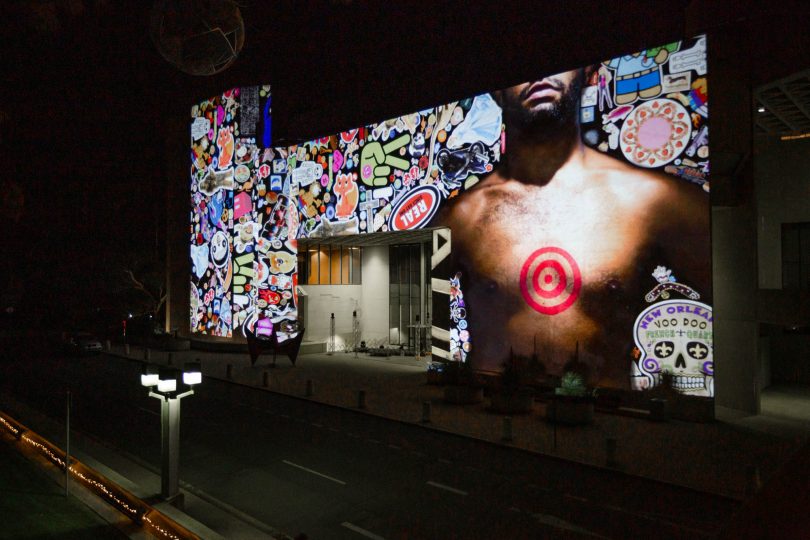
I am Visible by Tony Albert crosses the facade of the National Gallery. Photo: Jack Mohr.
I Am Visible includes projections of proud young Aboriginal men, each emblazoned with red targets on their chests, along with statements of love and respect for family and community. The target reference makes both strength and vulnerability visible and real, no longer hidden.
The vision Mitzevich outlines for the Gallery’s connection to the city is big, both metaphorically and literally. Speaking about project plans that are still unfolding, he says “I’m really excited about being on the edge of the lake. I won’t reveal too much but the lake is a desirable canvas. I hope we can do something on it in the future.
“There is so much public space here, just crying out for things to enliven it. Art in the 21st-century isn’t about hanging a picture on the wall, it’s about conversations, enthusing people and starting discussions about what art is – and the real answer is that it can be anything.”
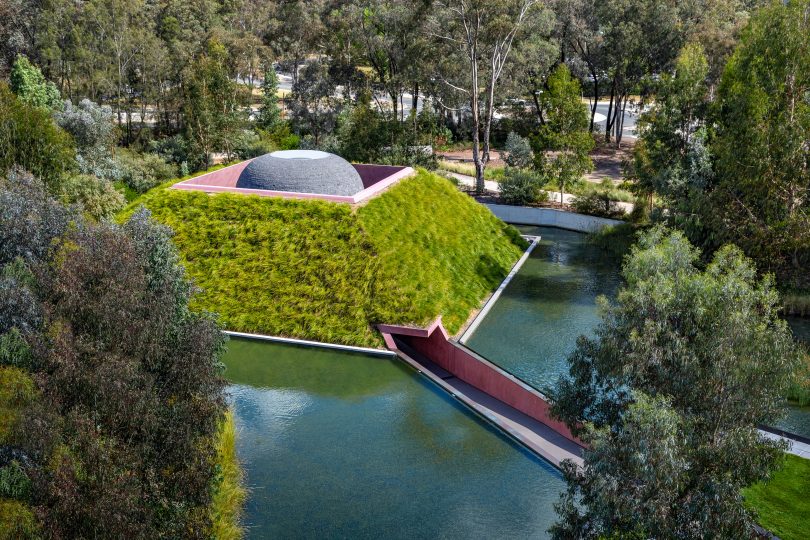
Director Nick Mitzevich is keen to expand the Gallery’s presence in Canberra. Photo: supplied
There’s some re-thinking going on inside the walls too: Mitzevich says he is considering the stories the Gallery can tell, elevating the role of women artists and indigenous artists and throwing new light on the decorative arts and their role in the dialogue of Australian art.
“Traditionally galleries have used an encyclopaedic approach,” he says. “We’ll take a multi-theme approach to how we tell the story of Australian art, and that will open at the end of the year. In the longer term, the National Gallery has a geographical location in Canberra, but we want to ensure as many Australians as possible connect with and have a relationship with the national collection.”
Mitzevich is aiming to get involved in the city’s horticultural pursuits and is currently obsessed with the bike paths around the lake. He’s bought a bike and is trying to ride every night both to clear his head but also perhaps to get a sense for how this city breathes as he settles in for his next big adventure.
‘I am Visible’ is a 50-metre digital projection on the NGA facade created by Tony Albert, a Girramay, Yidinji and Kuku-Yalanji man. It’s part of Enlighten and runs from 1-11 March, 8–11pm.












